|
By the middle of the 1800s there was more church growth nationally than there had been in any other century. And, like all communities, Bishop’s Stortford was affected. To accommodate the religious needs of a growing Anglican population in Hockerill and New Town (See Guide 14), the parish of St Michael’s was divided into three separate parishes. At Hockerill, largely through the efforts of Rev John Menet and Rev Francis Rhodes of St Michael’s, All Saints church was built in 1851 and New Town was catered for eight years later by the building of Holy Trinity church in South Street (See Guide 13).
Local architect George E. Pritchett (See Guide 5 - Chantry Road) was commissioned to draw up plans for the new church at Hockerill in the Gothic style, and a year after construction began it was consecrated by the bishop of Rochester. A flourishing congregation led to the church being enlarged 26 years later, but disaster struck on 21 June 1935 when it was completely destroyed by fire.
|
|
While the ruins were still smouldering, churchyard collections were organised and within days a meeting of parishioners enthusiastically endorsed the opening of an official rebuilding fund. A more widespread appeal produced enough money to build a new church on the same site, and distinguished architect S.E. Dykes Bower was commissioned to design it.
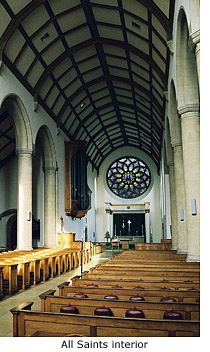 The new church was startlingly modern for the time, its dominant tower pierced by large and small lancet windows and topped with a hipped cap instead of the usual spire. The church interior is deceptively large; the eastern wall, above the altar, dominated by a fine rose window depicting the Lord surrounded by the emblems of saints – a reference to the dedication of the church. Designed by Hugh Easton, the window was given in 1937 by local residents Captain Charles Randall and his wife. A detailed description of the rose window can be found at www.allsaintshockerill.org.uk The new church was startlingly modern for the time, its dominant tower pierced by large and small lancet windows and topped with a hipped cap instead of the usual spire. The church interior is deceptively large; the eastern wall, above the altar, dominated by a fine rose window depicting the Lord surrounded by the emblems of saints – a reference to the dedication of the church. Designed by Hugh Easton, the window was given in 1937 by local residents Captain Charles Randall and his wife. A detailed description of the rose window can be found at www.allsaintshockerill.org.uk
All Saints was consecrated in July 1937 by the bishop of St Albans, but it took a further two years to completely refurnish it and put the churchyard in good order. A decade later two rows of cherry trees were planted at the front of the church, each bearing a name tag at its base commemorating individual men of Hockerill who gave their lives in the Second World War. The siting of All Saints is superb, standing high above the Stort valley almost in line with St Michael’s church on the opposite hill.
|
|
*Stephen Ernest Dykes Bower, architect, was born in Gloucester on 18 April 1903. He set up practice in 1931, moving to Quendon Court near Saffron Walden, Essex, in 1933, where he lived and ran an office for the remainder of his life. The rebuilding of All Saints church, Hockerill, in 1936, was his first important new work, a Gothic design but quietly original. He served with the Ministry of Town and Country Planning in Cambridge during the war, then resumed his practice with a variety of domestic, institutional, and other work, but always predominantly ecclesiastical. He designed three new churches, all built of brick, the most impressive of which was St John's, Newbury (1955–7).
In 1949 Godfrey Allen, the surveyor of St Paul's, commissioned Dykes Bower to design a new high altar for the cathedral. Completed in 1958 it was noted for its design and craftsmanship, recreating Wren's intentions for a baroque baldachin. In 1951 he was appointed surveyor of the fabric of Westminster Abbey and began a programme of cleaning and repair. Dykes Bower contributed work to countless parish churches, as well as cathedrals in Canterbury, Winchester, Norwich, Ely, Gloucester, Wells, Oxford, Carlisle and Peterborough. His work can also be found in Oxford and Cambridge colleges, public schools, the halls of City livery companies and elsewhere.
After his retirement in 1973 he was a lay canon of St Edmundsbury Cathedral from 1979 to 1984, and president of the Ecclesiological Society from 1983 until his death at Quendon Court, Essex, on 11 November 1994. He never married.
*Additional notes taken from the Oxford Dictionary of National Biography
|
|
Before the development of King’s Court, opposite the church, the area of grass in front of these houses stretched down the hill to the railway line and the Meads beyond. The pasture here was so lush that up until the start of the last war a dairyman, Mr Thickings from Castle Street in New Town (See Guide 14), regularly drove his herd of cattle through the town’s streets to this spot where he left them to graze.
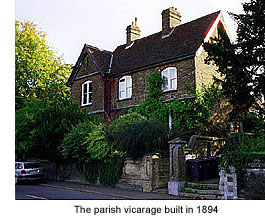 Adjacent to All Saints church is Church House, the original home of the parish priest. The current vicarage in All Saints Close, opposite Foxley Drive, was built on land formerly occupied by the Vicarage of the Manor of Stortford, first mentioned in 1291. Whether or not the vicarage, which was still in existence here in the 1930s, was the original or a later built residence is unknown but the land was finally developed some fifty years later to form All Saints Close and Kingsbridge Road – the latter taking its name from lands here previously known as Great Kingsbridge and Little Kingsbridge. Adjacent to All Saints church is Church House, the original home of the parish priest. The current vicarage in All Saints Close, opposite Foxley Drive, was built on land formerly occupied by the Vicarage of the Manor of Stortford, first mentioned in 1291. Whether or not the vicarage, which was still in existence here in the 1930s, was the original or a later built residence is unknown but the land was finally developed some fifty years later to form All Saints Close and Kingsbridge Road – the latter taking its name from lands here previously known as Great Kingsbridge and Little Kingsbridge.
|

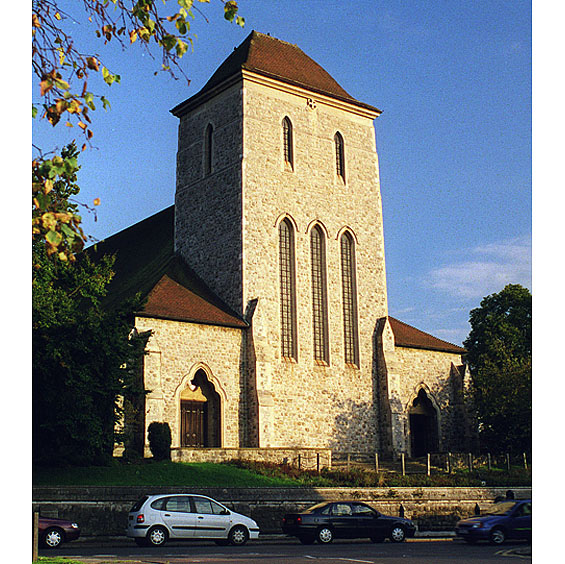

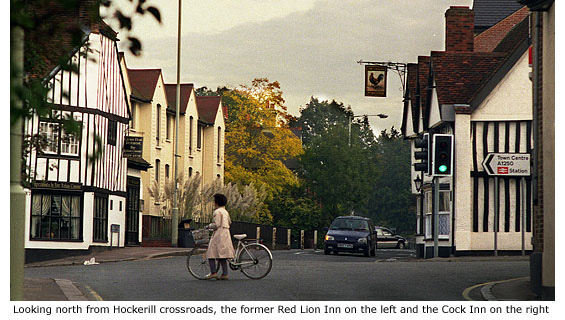

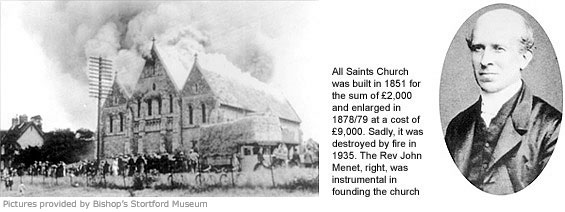
 Adjacent to All Saints church is Church House, the original home of the parish priest. The current vicarage in All Saints Close, opposite Foxley Drive, was built on land formerly occupied by the Vicarage of the Manor of Stortford, first mentioned in 1291. Whether or not the vicarage, which was still in existence here in the 1930s, was the original or a later built residence is unknown but the land was finally developed some fifty years later to form All Saints Close and Kingsbridge Road – the latter taking its name from lands here previously known as Great Kingsbridge and Little Kingsbridge.
Adjacent to All Saints church is Church House, the original home of the parish priest. The current vicarage in All Saints Close, opposite Foxley Drive, was built on land formerly occupied by the Vicarage of the Manor of Stortford, first mentioned in 1291. Whether or not the vicarage, which was still in existence here in the 1930s, was the original or a later built residence is unknown but the land was finally developed some fifty years later to form All Saints Close and Kingsbridge Road – the latter taking its name from lands here previously known as Great Kingsbridge and Little Kingsbridge.